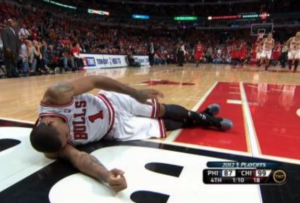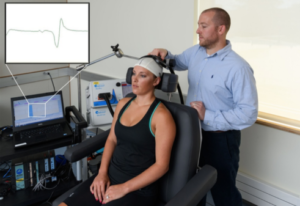 In 2012, the Chicago Bull’s star point guard, Derrick Rose, left a playoff game with a knee injury. Little did Chicago fans know at the time, but this wasn’t just a single season playoff series loss…
In 2012, the Chicago Bull’s star point guard, Derrick Rose, left a playoff game with a knee injury. Little did Chicago fans know at the time, but this wasn’t just a single season playoff series loss…
Rose was the #1 pick of the 2008 NBA draft, with high hopes of a Jordanesque Bulls revival. The Bulls hadn’t done much since the six NBA championships between 1991 and 1998, with two 3-peats. For those interested, ESPN is currently running a series, “The Last Dance”, on the Bulls dynasty. It’s 10 episodes and phenomenal. For those Detroit fans… ESPN was able to summarize the Pistons in a single show, “Bad Boys”… mainly just commercials…
It was an exciting time having Rose win the Rookie of the Year in 2009 and the MVP in 2011 (youngest MVP in NBA history).
However, after having the left anterior cruciate ligament (ACL) repair 3 days after the initial injury and returning to play by the fall of 2013, he tore the meniscus in his right knee. Another surgery later… another year of recovery… a repeat right knee meniscus tear.
A 2012 Am J Sports Med article studied 129 isolated meniscal tears in NBA players and found that more than 80% of players returned to play, with no statistical change in basketball performance. The ~17% not returning tended to be the larger and older players… However, Rose, slim and young, never returned anywhere close to his pre-injury status. If you asked most Chicagoans these days, they probably think the guy retired… I myself just learned he’s now on the Detroit Pistons.. of course, he’s probably the best they’ve had since Isiah…
So what happened? Just another freak unexplainable tragedy? Did Achilles succumb to Paris of Troy’s arrow?
Some experts suggest Rose’s freakish athletic ability relied too much on his explosive acrobatic layups, which simply broke down his knees all too quickly in his career. Rose couldn’t adapt, never changing the way he landed or drove the paint, so perpetual injury made him a lame horse on the track.
However, a newer kinesiology study in 2020 suggests a different hypothesis. Structural changes in the brains of patients undergoing ACL reconstruction, potentially hinder recovery, and contribute to performance deficits.
Beyond the well understood musculoskeletal consequences from an ACL repair, abnormal activation and excitability of the spinal cord tract descending from the motor control center of the brain to the extremities (corticospinal tract) have been observed. The corticospinal tract is essential for motor performance. So an indirect change in this tract would be an even larger barrier than muscle atrophy directly related to surgery. Corticospinal tract impairment is seen in other neurologic disorders, like multiple sclerosis or stroke, leading to weakness and poor fine motor control. Therefore, while ACL injury is not a direct insult to the brain or spinal cord like MS or stroke are, the resultant motor performance can be similar. This then can cause changes in the motor control centers of the brain, called the motor cortex.

Image taken from: Lepley et al. Corticospinal tract structure and excitability in patients with anterior cruciate ligament reconstruction: a dti and tms study. NeuroImage: Clinical. 2020
This 2020 paper radiologically imaged the corticospinal tracts of 10 patients undergoing ACL repair. The brain hemisphere and corticospinal tract opposite the injured limb demonstrated smaller size and reduced excitability. (Each side of the brain controls the opposite side of the body)
This study suggests that ACL repair may be associated with asymmetric changes in the brain and the corticospinal tract. But what is the relationship? Models suggest that the human body limits activation of, or even blocks, motor tracts to prevent unwanted movement of an injured joint. This may suggest a bit of self-limitation… protect the limp leg. Of interest, interviews may have suggested Rose restricted himself despite medical clearance to play.
“Until he feels ‘in his mind’ he can confidently dunk off his left foot in a game situation, he is not 100% mentally ready to return to competition. If you look at the reasons athletes do or do not get back to their pre-injury level of play, there’s no question the psychological point is part of it.”
— Brian Cole, MD
Derrick Rose’s surgeon
Unfortunately for Derrick Rose, those knee surgeries may not have just shriveled up his quadriceps… his brain may have shriveled up a bit too… More research is necessary to see how this can be recovered, since data suggests a mental component and no other irreversible central nervous system insult, as is seen in MS or stroke. Previous work suggests knee surgery outcomes can be improved, not just through therapeutic muscle rehabilitation, but cognitive and neuropsychological training. The sports psychologist’s role in linking the brain and body is evolving. However, it may not be as simplistic as “mind over matter”, considering the degree of volumetric changes in the brain. Treatment and reversibility may be more complicated than, “talking it out”.







